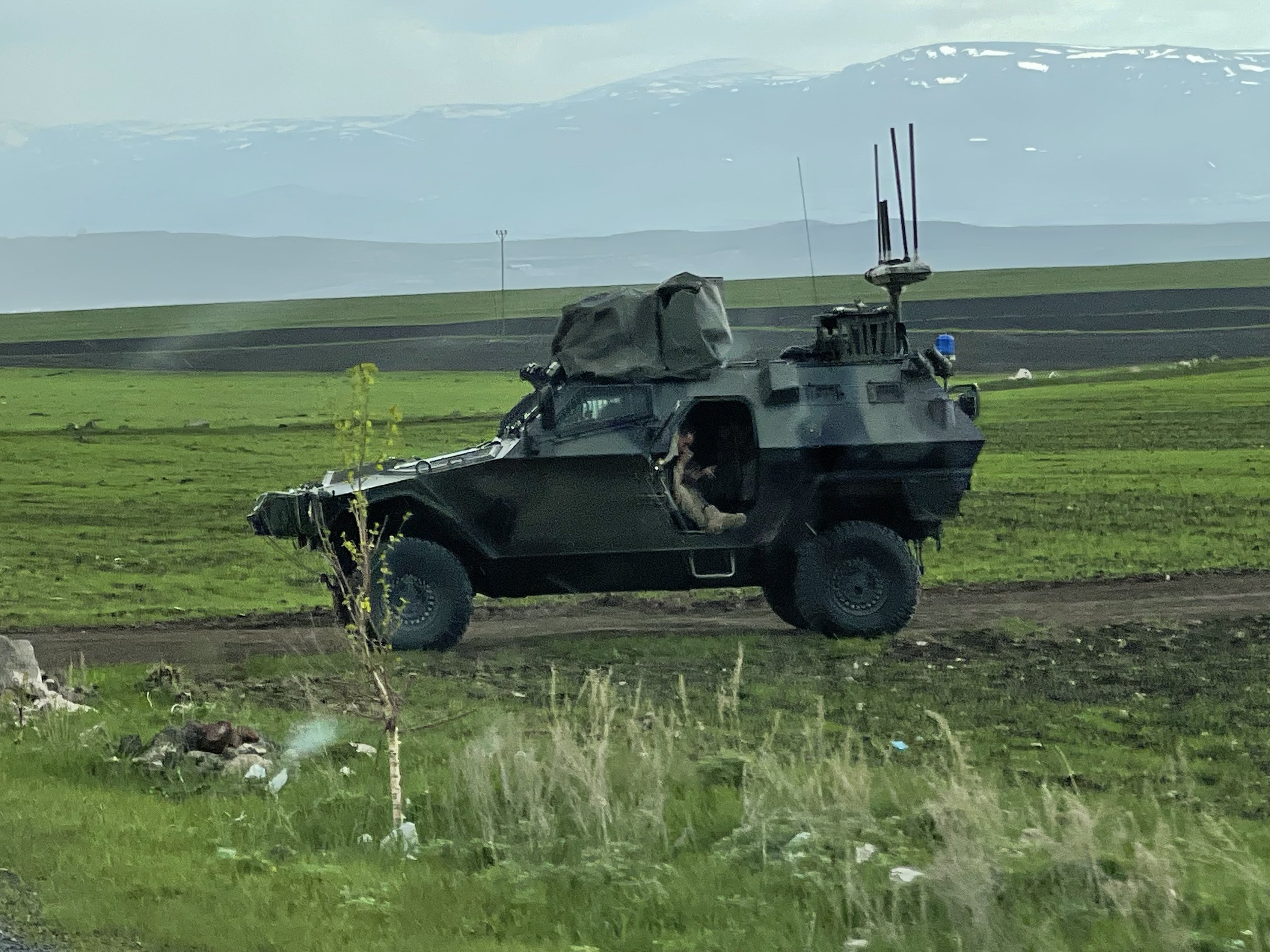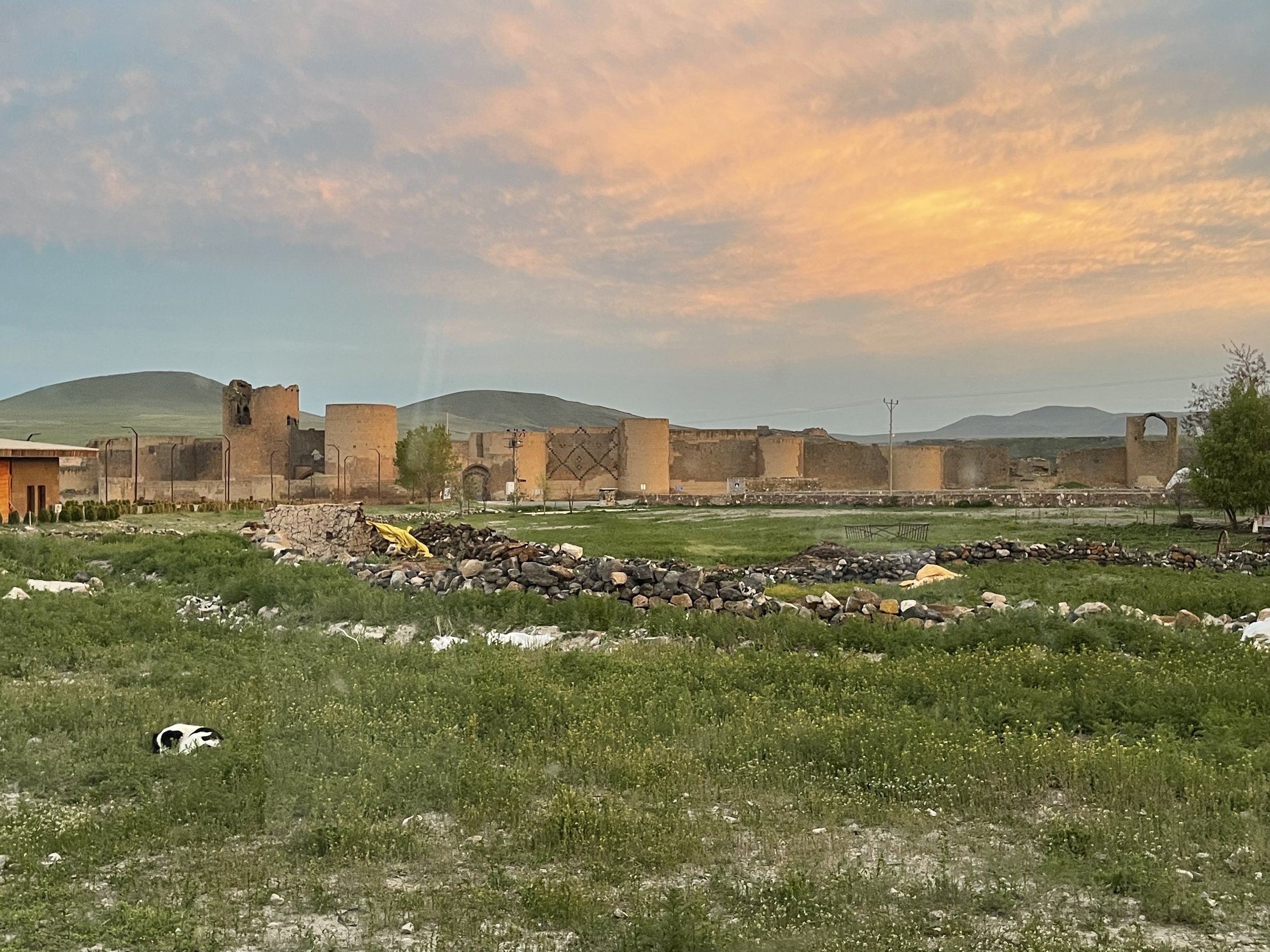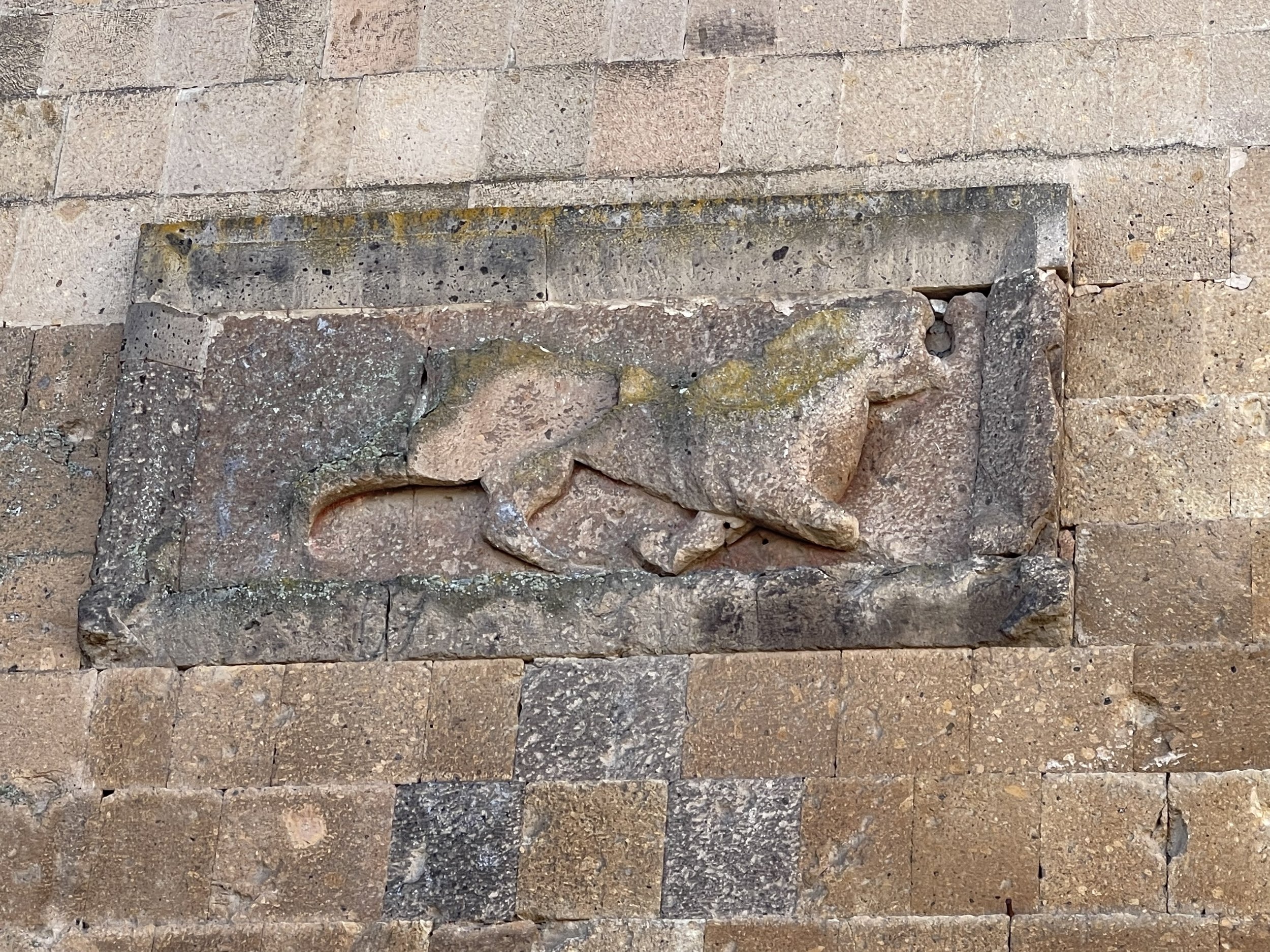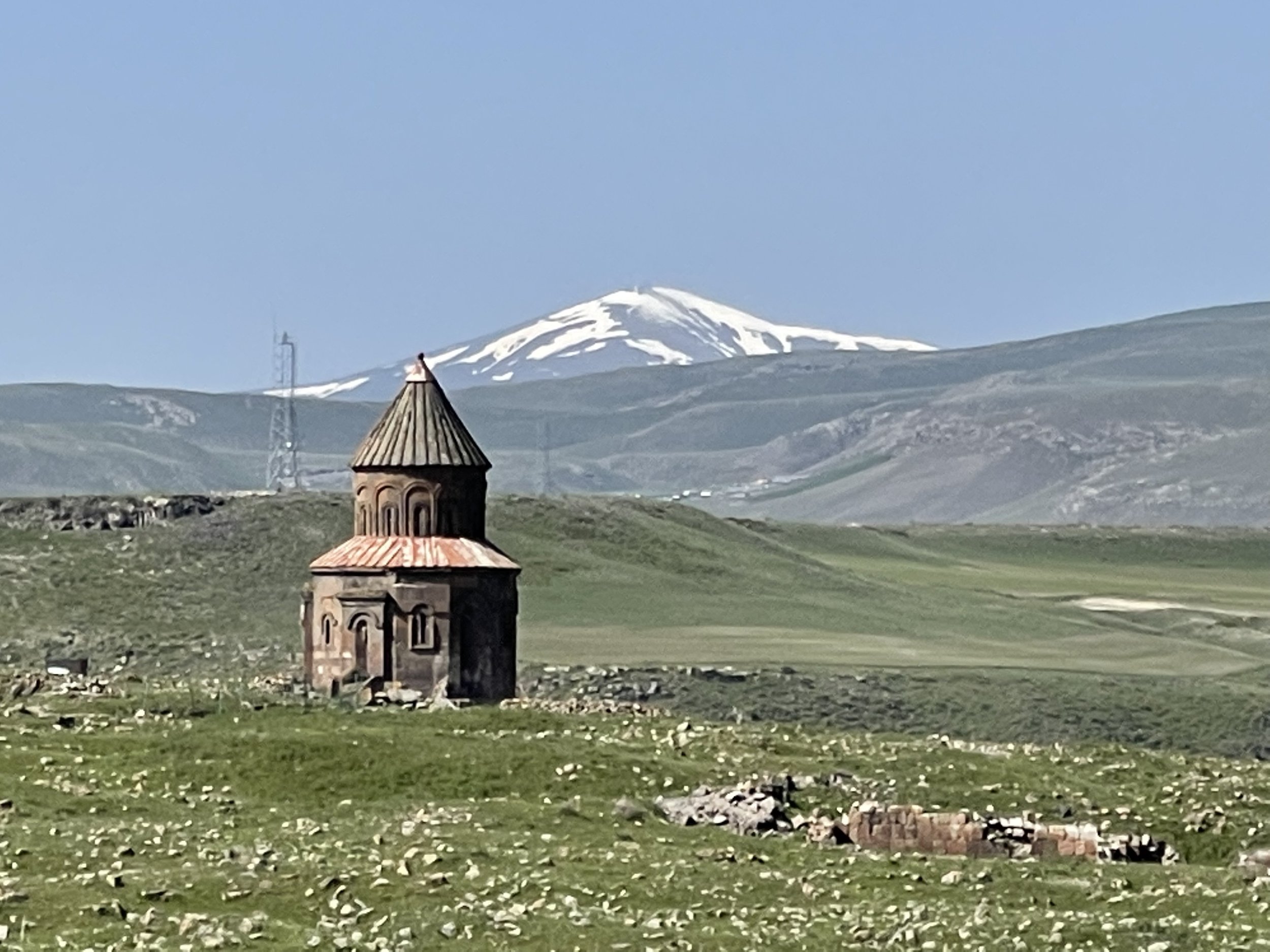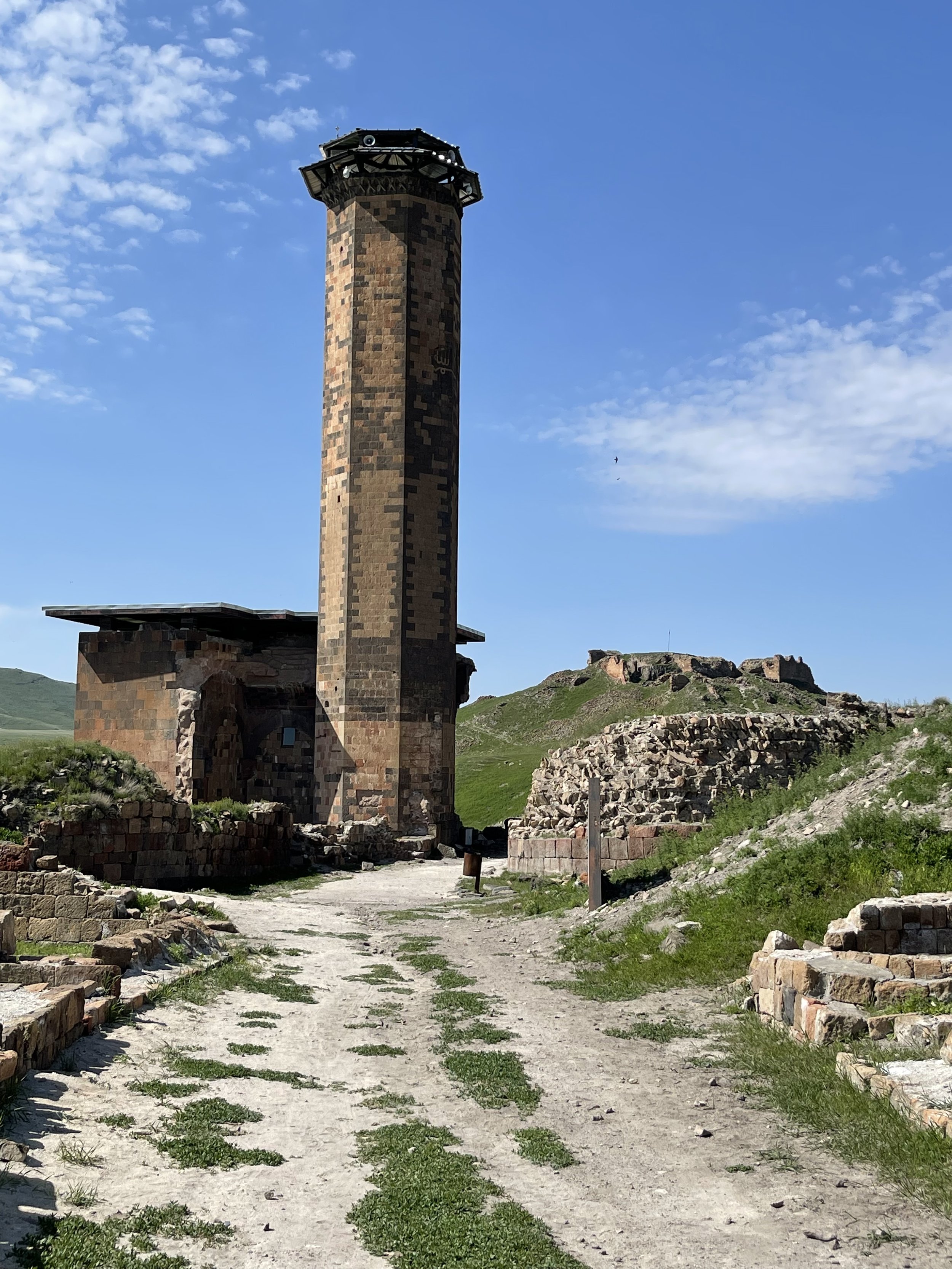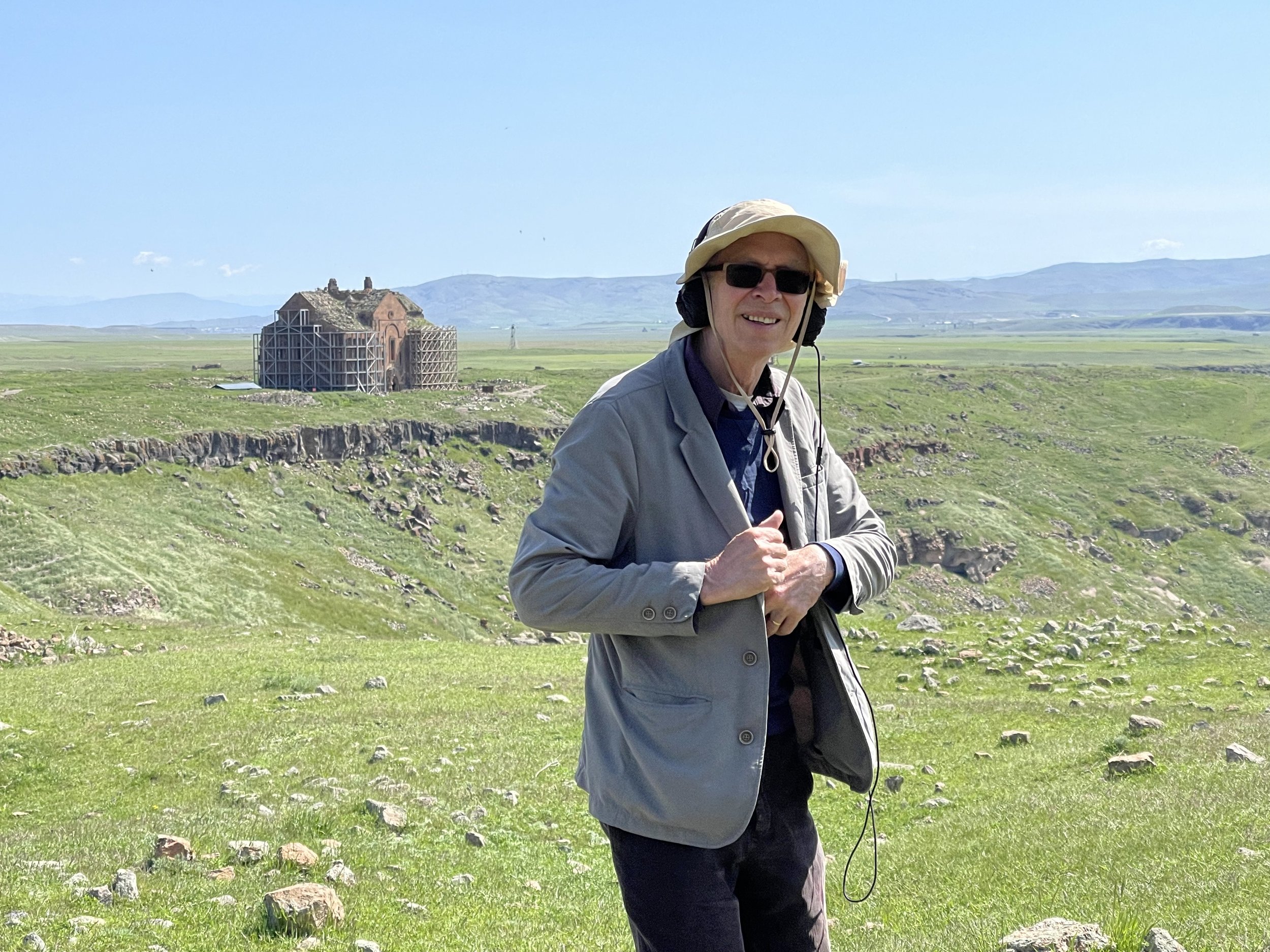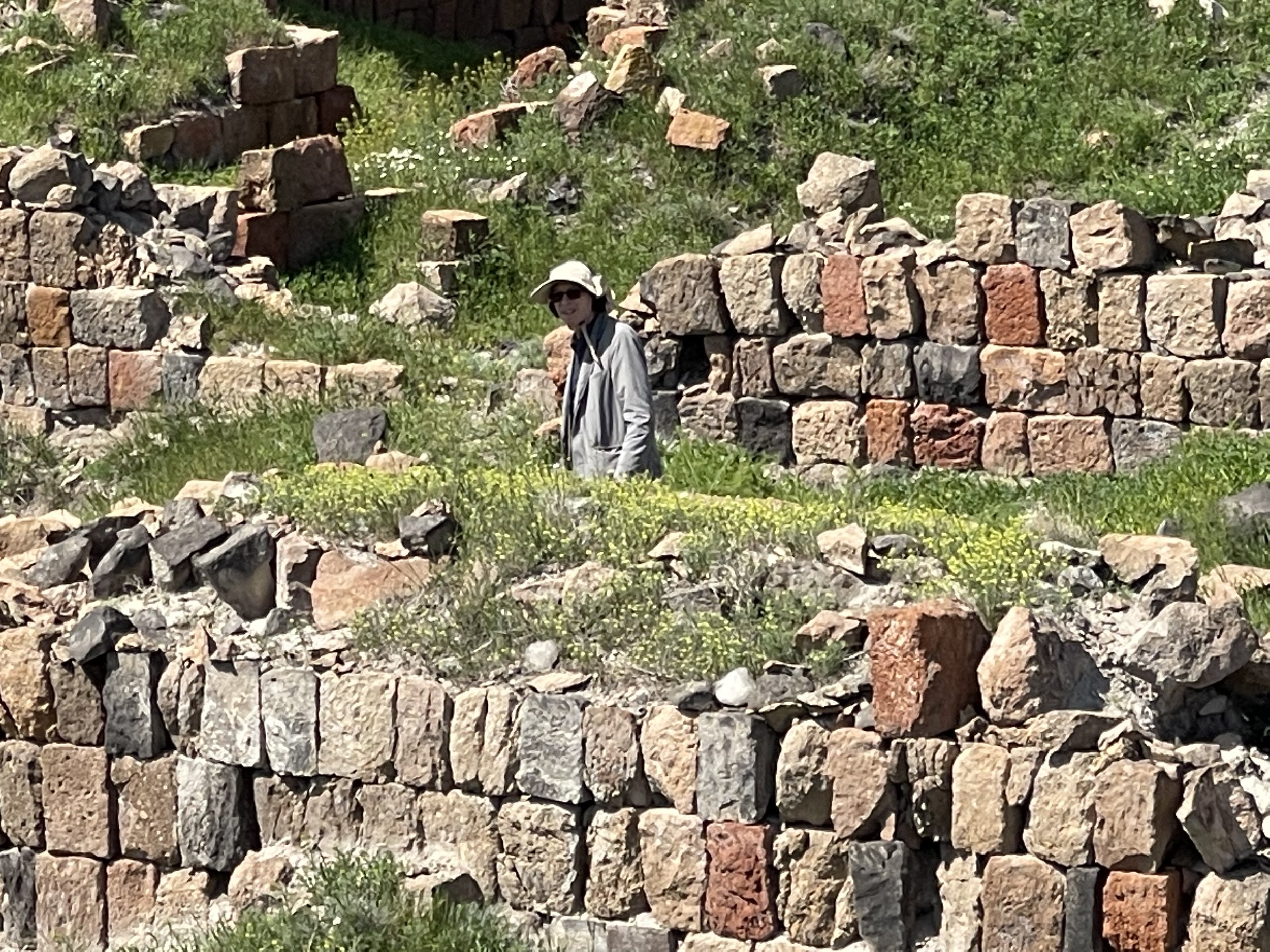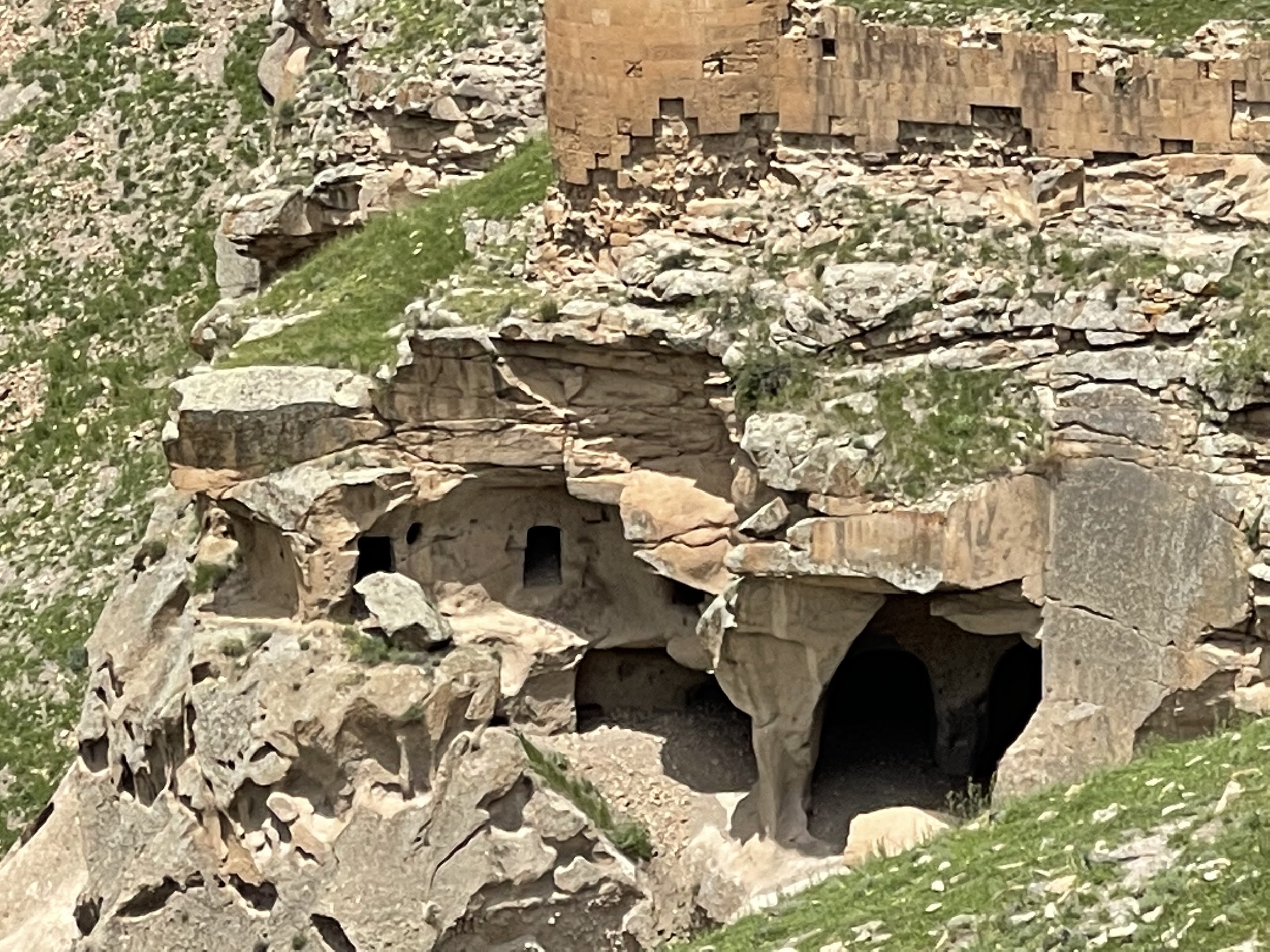The mountainous route from Erzurum in Turkey to Ani was a bit nerve wrecking for us. We had no idea if the Sprinter was really fixed or whether the problems we had experienced over the last few days would resurface. As we penetrated this corner of Eastern Turkey, close to the Armenian border we realised also how near we were to the border with Iran. This was close to where we had crossed in 2018. We saw buses going to Dogubayazit which was the last town in Turkey before we entered Iran. I remember purging my lurking beer bottles before we crossed the border. There I had popped on a long sleeved, floor length dress, (purchased in Muslim Turkey) and scarf to blend in.
We noticed all the signs in the churches later in Georgia where the dress code for women visiting Christian Orthodox churches was very similar!
With no fences in the countryside, we are in danger of colliding with livestock. Cows are constantly drifting into traffic. Sometimes there are no herdsmen and sometimes they are simply not watching but on their mobile phones! Or occasionally access to fresh pastures happens to be via the main road which can be completely blocked.
It must be cheaper to employ people to look after cattle all day long rather than to build and maintain fences around many fields. The system in France is, that the farmer turns up twice a day to feed their stock, check their water or to shift them around a rotation of fields. Here men and boys are virtually living with herds of cows and sheep as they must have done for centuries.
When we travelled in the Stans a few years earlier, people herded a very small number of cows, rarely such large numbers. It seemed likely there, that the small number were each owned by one family.
As we approached Kars town, we wondered how the rural economy worked here. The government of Turkey is certainly investing in high quality roads and tunnels in this region, as in all parts of the country.
It was mountainous but the rivers were fast flowing at this time of year as snow was melting in the mountains. We saw many small clusters of farm buildings and a lot had the same blue coloured corrugated iron roofs. Some Buildings looked scarcely habitable and varied from basic and sound, to hard to imagine a life in such conditions in an area with such extremes of cold and heat. Some collections of buildings had one fairly new blue corrugated structure and a collection of other less sound buildings clustered around. Had the government tried to upgrade these farms by subsidising habitations and shelters for over wintering live stock? We also could not work out how the herds were owned. There were very few fences and large herds of small beef cattle were moved around by herdsmen. This North Eastern corner of Turkey was fertile and remote. It must provide a lot of kebabs!
Similarly large numbers of sheep and goats were overseen by shepherds. The larger herds might have several men and dogs and increasingly horses to move these beasts to new pastures or to places of safety to sleep. These herds were too big to be owned by those caring for them. We wondered if farming had been modernised and collectivised in some way and whether there were cooperatively owned herds? (I think the answer was some kind of economic development programme and American aid money). This has since stopped and there is still grinding poverty.
The other thing we noticed as we travelled beyond Trabzon to Kars was that we were passing army barracks with old tanks on the grass and other military vehicles appearing at junctions. Eventually there were check points where cars had to slow down. It was low key and we were always waved on in a really friendly way. But it was a change. (Jim commented that half a dozen people with machine guns, sand bags, and an armoured personnel carrier was only fairly friendly). We conjectured that the reason for this military presence may be related to on-going skirmishes between the Turkish military and militant sections of Turkey’s Kurdish population. The PKK is a banned organisation in Turkey and fatalities of mainly Kurds, Turkish Police and Military continue to occur. (Over 5,000 in the last 5 years). The number of annual fatalities seems to be reducing, but the tensions endure.
As we wondered about all these things, we soon found the kilometres passing and we arrived at Kars and the turning off to Ani. Ani is a ruined latter day medieval Armenian city now situated in Turkey's province of Kars, next to the closed border with Armenia. Between 961 and 1045, it had been the capital of the Bagratid Armenian kingdom that covered much of present-day Armenia and eastern Turkey.
The long straight road to Ani from Kars had no fences and no trees. Habitations were sparce and painfully poor. It was largely flat and the mountains had receded. There were small quarries and frequent barriers along the road. These were presumably to stop snow drifting onto the only road for miles around. There were also small tracks leading to bigger villages or farms. We were pretty pleased to get here with no further mishaps with the Sprinter!
We wondered where we might safely stop to sleep in this area. We felt very visible in our shiny Mercedes van! In the end we decided to plough on to Ani, now a World Heritage site with a new car park. Maybe it would be a good place to pull over and we could visit the monument in the morning. This was a good decision. There was a large area overlooked by CCTV, poor lighting and access to newish but very poorly maintained toilets near the ticket office. After hours the place appeared largely deserted apart from the small collection of homes, some children and dogs.
The Ani site itself had shifted between states many times over the centuries between the Armenians and the Ottomans. It was originally founded in the 5th Century and eventually abandoned in the 17th Century. Now it is in Turkish hands and although the settlement had been the Capital of neighbouring Armenia for centuries, the border between the two countries is not open at this time.
Ani - Ravine on side adjacent to Armenian. Once a bridge crossed to allow trade between the Armenian side and the Ottoman side of the ravine. Traces of the bridge are visible
The land border with Armenia was only around 400 metres away from Ani and whilst tourism was being heavily promoted at the site, there was the odd armoured car lurking around the site and soldiers probably doing their military service cheerfully watching proceedings with weapons on show.
This was a reminder of the enduring tense relations between Turkey and Armenia that persist to this day. Normalisation of relations could involve Turkey acknowledging that their relocating and killing of some 1.5m Armenians in 1915 amounted to genocide. Armenia is looking for recognition from Turkey that this was indeed an act of Genocide, as is widely accepted. This has never been acknowledged by the Turks who believe that to this day, Armenia still has designs on some disputed border areas in the Eastern part of Turkey. So Turkey is looking for Armenia to respect the existing borders without reservation. This animosity endures and the borders between Turkey and Armenia remain closed and are still pretty aggressively policed for reasons of lack of trust.
Ani- Turkish Military presence. They keep popping up, day and night.
Ani - external walls and entrance from car park
We were permitted to stay in the car park overnight in our camper and it looked out onto the monument and was overseen by cameras to provide added security against heaven knows what!
Permission did not prevent a knock at the door at two in the morning and army personnel asking to see our passports. Luckily the division of labour is that Jim looks after passports. So I stayed firmly tucked under my covers. Jim reported that although his sleep was disturbed they were actually very friendly!
Ani - External city walls seen from carpark
We were parked close to village dwellings and young children ekeing out an existence by selling socks and cloths to tourists. People were living in stone buildings with grass roofs, lean to’s, shacks basically. It is amazing that any stone remains on the vast site of Ani as much must have been recycled locally before better security and World Heritage Status arrived in 2016.
So why are we here and what is it? Well it is a huge site dating back to antiquity. At its height in around 13th century, 100,000 people lived in Ani and it was one of the largest cities in the world at that time. It was an important trade route and part of the Silk Road. It is a vast site and there are the remains of very many historic buildings testament to the importance of Ani as a city hitherto. Because of its connection to Armenia, it is also considered to be an important part of Armenian heritage. Something that is not encouraged in Turkey.
Ani - Lion carving at entrance to site. The Standard of Ani. Situated between massive double defensive city walls.
Ani- Church of the Redeemer
Ani- partially restored Mosque. In use for prayers. A city that had passed back and forth between Armenia and the Ottomans.
Ani- Mosque in foreground and Cathedral behind
Ani - Cathedral. And a man in strange head gear.
Ani - Cross carving on the Cathedral
Ani - Cathedral with collapsed roof. Part propped up prior to restoration. Some claim it to be earliest Gothic design but?
Ani - former Zoroastrian temple
Finally - Jim has found the Silk Road!
Ani - Abandoned Citadel on hill overlooking site
Ani - Ravine on Turkish border of site. Evidence of Cave dwellings?
View of the village
On leaving Ani, we retraced our steps and drove back North towards the Black Sea coast and then headed East towards Kamalpasa, the border between Turkey and Georgia. This was our most significant border on this trip and we had visions of a long process involving questions and searches. We had also heard that the driver and passenger were separated during the crossing through formalities. This always increases anxiety somewhat, as you cannot always keep tabs on what is happening with the other! Our suspicions were not helped by having passed many hundreds of heavy goods vehicles parked on the hard shoulder of the main road leading to the border. This looked like operation stack.
So that night we stopped alongside a hotel/restaurant still in Turkey, right on the sea and had dinner and then a snooze in readiness to enter Georgia the following morning, the primary focus of this trip. We had heard that they also rooted through medicine chests looking for banned medication etc. We had been advised to carry prescriptions for any medication we were carrying. I have to report readers, that this crossing for our vehicle was super fast. Once checked out of Turkey and arriving at the Georgian frontier we were welcomed. The tourist line was pretty short. We were not separated or grilled. They obviously scrutinised our passports and car papers. The search involved simply a glance inside the sliding side door and the comment ‘nice car’. We were issued with a leaflet telling us where to buy van insurance some 7kms away from the border and off we went. We wondered if it was respect for our advancing years or perhaps following Covid everyone is being especially nice to tourists as economies recover. The roads were good and the insurance booth sat alongside a Gulf Petrol station (fuel still reducing in price) which sold Euro diesel which was necessary for our sensitive Mercedes. The next blog will start at our first overnight stay in Georgia! (Kutaisi).


